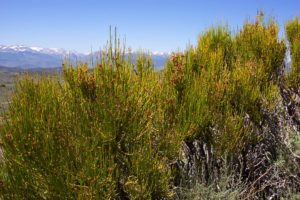
BY Adele Peters
Around half of the habitable land onthe planet is now used for agriculture. A millennium ago—or more recently, in the case of many countries—it was mostly wilderness. Soon, technology could reshape that balance again, bringing back acres of trees as tools to fight climate change.
Jonathan Riggall, the director of energy and natural resources at Stantec, researched how technology might enable rewilding in the U.K. and Europe. Riggall had begun thinking about the historical landscape when he studied environmental archaeology as a university student. “My first introduction to the concept that Europe had a wildwood was through the archaeological record,” he says. Over the years, as he worked in the climate change sector, he noticed a disparity in how that past was discussed—developing countries would be criticized for cutting down forests to farm, but few people talked about the fact that the same thing had happened earlier in Europe at a massive scale, and again when Europeans arrived in America.
Now, he argues, the fourth industrial revolution—from genetic engineering to robotics and artificial intelligence—could make it possible to change land use at a large scale. Vertical farms, including systems that plant, grow, and harvest food autonomously, can use as little as 1% of the land that a conventional farm would use to grow the same amount of food. The systems are still at a relatively early stage and expensive, but beginning to prove that they can be profitable. Right now, vertical farm companies focus on leafy greens, which make the most sense financially, but berries and vine crops will soon follow. Other indoor agriculture facilities, like a large, state-of-the-art greenhouse now growing tomatoes in Appalachia, use one-thirtieth of the land used in traditional farming. A new vertical wheat farm grows as much in 850 square feet as could normally grow on 30 to 50 acres.
Areas that were once forested and no longer needed for farming could be restored to wilderness. The idea of rewilding is already on some government agendas. In the U.K., where Riggall works, the government recently pledged to restore woodlands on 30,000 hectares of land per year as part of a larger plan to fight climate change. “What I find interesting is that they didn’t really necessarily align to new agricultural practices,” he says. “And those two things are so interlinked, because you can’t have land-use change without figuring out where you’re going to feed people.”
 The United Nations has projected that as the global population grows, world food production will need to nearly double by 2050—so some gains in using land efficiently will likely be offset by demand. Still, there’s opportunity to rethink current farmland. Riggall hopes that by visualizing how land can be used differently, the Stantec project can help designers begin to make new choices when planning multi-year developments that will be in place for decades. The project “helps people look forward,” he says, “because we’re designing things now.”
The United Nations has projected that as the global population grows, world food production will need to nearly double by 2050—so some gains in using land efficiently will likely be offset by demand. Still, there’s opportunity to rethink current farmland. Riggall hopes that by visualizing how land can be used differently, the Stantec project can help designers begin to make new choices when planning multi-year developments that will be in place for decades. The project “helps people look forward,” he says, “because we’re designing things now.”
Wow, awesome blog layout! How long have you been blogging for? you made blogging look easy. The overall look of your website is magnificent, as well as the content!
My brother suggested I might like this blog. He was entirely right. This post truly made my day. You cann’t imagine simply how much time I had spent for this info! Thanks!
Good post. I absolutely love this site. Keep it up! Sella Quint Khan
I like the valuable information you provide on your articles. Madeline Damon Aronow
Comments are closed.